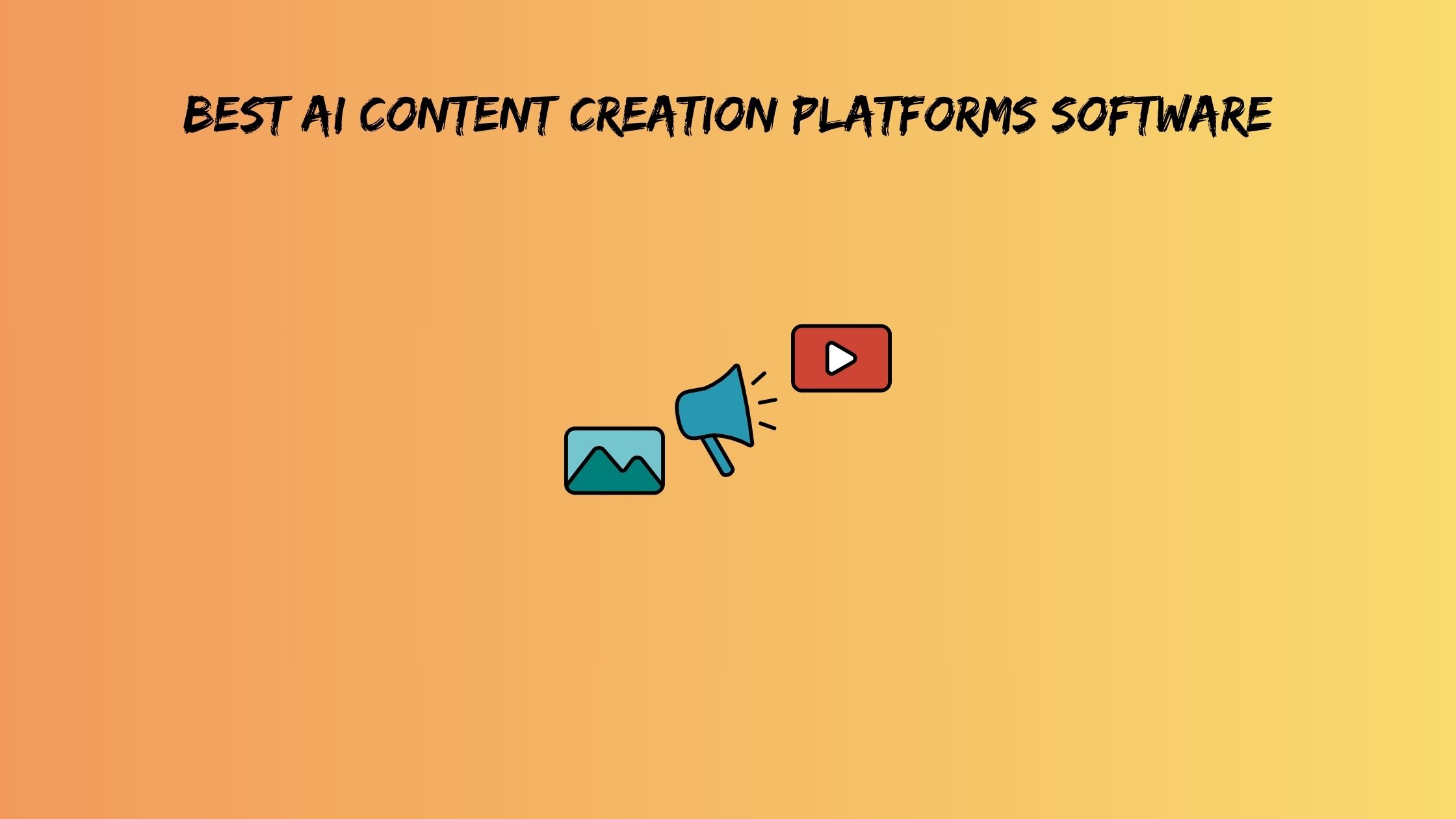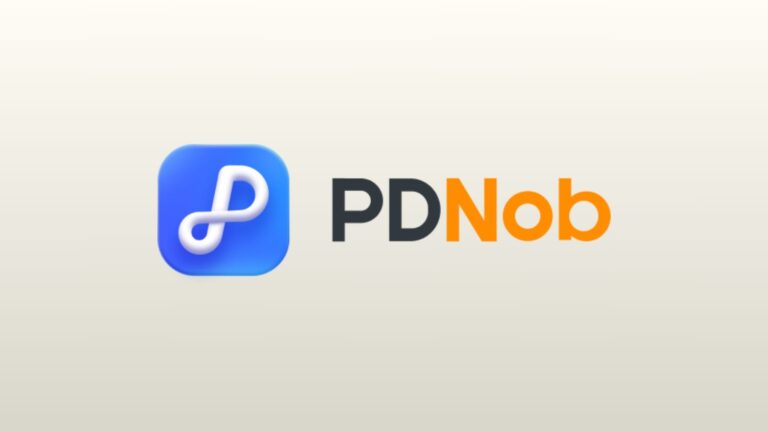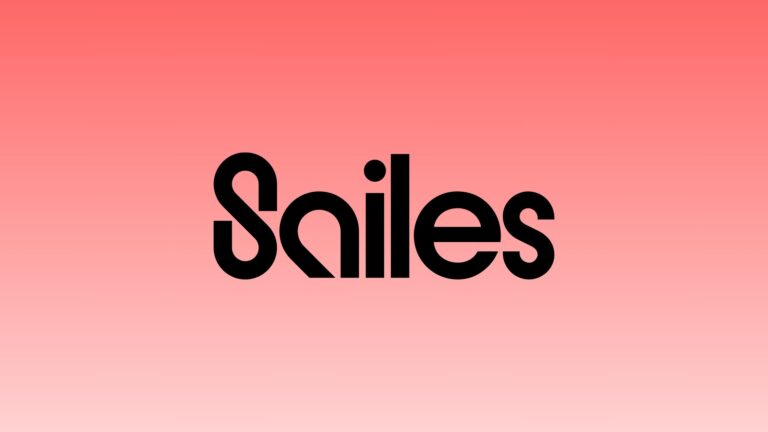Best AI Content Creation Platforms Software to Boost Productivity & Creativity
Content creators waste 70% of their time on mind-numbing tasks instead of actual creating. That’s like paying a chef to wash dishes all day instead of cooking masterpieces.
Traditional content creation methods simply can’t keep pace with today’s demand for high-volume, multi-format content. Meanwhile, your competitors are probably still hiring expensive agencies or burning out their teams with 60-hour work weeks.
Here’s the thing: the best AI content creation platforms software don’t replace your creativity. They amplify it. Think of them as your creative superpowers, handling the boring stuff so you can focus on what makes your content uniquely yours.
This guide reveals 10 top AI content creation platforms software that deliver measurable results, not just shiny features. We’ll show you exactly which platform fits your specific needs and budget.
What Separates Great AI Content Platforms from Overhyped Tools?
Most reviews just list features like a grocery list. That’s useless when you’re trying to choose between platforms that all claim to be “revolutionary.”
Here’s our evaluation framework based on real-world performance:
Multi-Modal Content Generation matters more than single-trick ponies. The best platforms handle text, video, audio, and visuals without making you juggle five different subscriptions.
Workflow Integration determines whether a tool becomes essential or forgotten. If it doesn’t play nicely with your existing setup, it’s just expensive digital clutter.
Creative Control vs Automation Balance separates the pros from the wannabes. Too much automation kills your brand voice. Too little defeats the purpose.
Cross-Platform Publishing Features save countless hours. Create once, publish everywhere with platform-specific optimization.
ROI Measurement Tools help you prove value to skeptical bosses. Most competitors ignore this completely.
Learning Curve vs Output Quality decides adoption success. Even powerful software becomes useless if your team won’t use it.
Also read: Best AI Image Generation Software
Top 10 AI Content Creation Platforms Software That Actually Work
1. Canva
Canva transformed from a simple design tool into a comprehensive AI content creation platform. Their Magic Design feature creates stunning visuals from simple text prompts, while Background Remover AI saves hours of tedious editing.
Small businesses love Canva because it eliminates the need for expensive design software or outsourced graphics. Social media managers report 300% faster visual content creation compared to traditional methods.
The free tier includes surprisingly robust AI features, making it accessible for startups and solopreneurs. However, advanced users might find the templates limiting after extended use.
Best for: Teams without dedicated designers who need professional-looking visuals daily.
2. Birdeye
Most businesses treat online reviews as necessary evils. Birdeye flips this mindset by using AI-powered content automation to transform customer feedback into marketing materials.
Their sentiment analysis identifies trending topics from reviews, while automated response generation maintains your brand voice across hundreds of interactions. Local businesses particularly benefit because Birdeye handles the time-consuming task of review management while generating fresh content ideas.
The platform excels at multi-location management, something crucial for franchises and service chains. Restaurant owners report 80% reduction in review response time while maintaining higher ratings.
Best for: Service businesses and franchises struggling with review management and local marketing.
3. InVideo
Video content drives engagement, but traditional video production scares many creators. InVideo bridges this gap with AI video generation tools that turn text into professional videos.
Their text-to-video feature handles everything from scene selection to background music. Voice cloning eliminates the need for expensive voiceover talent or awkward self-recording sessions.
Content marketers consistently report reducing video creation time from hours to minutes. The template library covers most industries, though highly specialized niches might need custom work.
Education and training companies find InVideo particularly valuable because updates don’t require complete video recreation.
Best for: Content marketers and educators who need regular video content without video production expertise.
4. SOCi
Managing social media for multiple brands or locations usually requires an army of community managers. SOCi uses AI content optimization to handle enterprise-scale social media operations efficiently.
Their automated posting schedules consider optimal timing for each platform and audience segment. Performance prediction helps avoid content failures before they happen.
Franchise businesses love SOCi because it maintains brand consistency while allowing local customization. However, smaller businesses might find the feature set overwhelming and expensive.
The platform shines with complex multi-brand strategies where manual management becomes impossible.
Best for: Large corporations, franchises, and agencies managing multiple social media accounts.
5. Synthesia
Corporate video production typically costs thousands and takes weeks. Synthesia changes this equation with AI avatar technology that creates professional presentations using realistic digital humans.
Custom avatar creation means your company spokesperson never has bad hair days or takes vacation. Multilingual content happens instantly without hiring translators or new talent.
Training departments report massive cost savings because video updates don’t require studio bookings or talent scheduling. The technology still feels slightly futuristic, which can be either impressive or off-putting depending on your audience.
Best for: Corporate training, international marketing, and educational institutions needing scalable video content.
6. Murf
Professional voiceovers traditionally required expensive talent and studio time. Murf democratizes high-quality audio with AI voice generation that rivals human performers.
Their 120+ voices include emotional tone controls, making content feel natural rather than robotic. Voice cloning lets you maintain consistent narration across all content without booking the same talent repeatedly.
Podcast creators particularly love Murf because it eliminates technical audio challenges. E-learning developers use it for consistent course narration across multiple modules.
The voice quality occasionally reveals its artificial nature in longer recordings, though short-form content sounds completely natural.
Best for: Podcast creators, e-learning developers, and marketing teams needing regular audio content.
7. Jasper AI
Content marketing requires consistent output without sacrificing quality. Jasper AI specializes in AI writing software that learns your brand voice and maintains it across all content.
Their brand voice training prevents the generic AI writing problem that plagues many tools. SEO optimization features help content rank without keyword stuffing.
Marketing teams report 10x faster blog post creation while maintaining editorial quality. The platform excels at long-form content where consistency matters more than creativity.
However, highly creative or opinion-based content still benefits from human oversight and personal touches.
Best for: Content marketing teams, agencies, and businesses needing regular blog posts and articles.
8. Predis AI
Social media success requires constant content creation and optimization. Predis AI handles end-to-end social media content automation while learning from your audience engagement patterns.
Their hashtag optimization and viral trend prediction help content reach larger audiences. Competitor analysis reveals content gaps your brand can fill.
Small businesses appreciate the complete automation because social media management often becomes overwhelming alongside other responsibilities. The learning algorithm improves performance over time.
However, brands with very specific aesthetic requirements might need additional customization.
Best for: Small businesses, influencers, and overwhelmed social media managers.
9. Poppy AI
Creating platform-specific content versions wastes enormous time. Poppy AI solves this with cross-platform content optimization that adapts single pieces for multiple channels.
Their one-click reformatting handles different platform requirements while maintaining message consistency. This approach maximizes content reach without multiplying creation effort.
Multi-platform creators find Poppy AI particularly valuable because it eliminates the tedious work of creating LinkedIn articles, Twitter threads, and Instagram captions from the same core content.
The platform works best with text-heavy content, though visual adaptation features continue improving.
Best for: Multi-platform content creators and digital marketers juggling several social channels.
Also read: Ai software for writing
10. Amplience
Large organizations struggle with content consistency across teams and channels. Amplience provides enterprise AI content management with dynamic personalization and automated testing.
Their content performance prediction prevents expensive failures before publication. Complex compliance and brand consistency requirements get handled automatically.
E-commerce platforms particularly benefit because product content needs constant updates and optimization. Media companies use it for managing vast content libraries efficiently.
Smaller businesses find the feature set excessive, but enterprises report significant operational efficiency gains.
Best for: Large enterprises, e-commerce platforms, and media companies with complex content requirements.
Choosing Your Perfect AI Content Creation Platform
Content Volume Needs determine your approach. High-volume operations benefit from platforms like SOCi or Amplience, while targeted creators might prefer specialized tools like Murf or InVideo.
Team Size and Skill Level matter more than budget. Solo creators need different features than enterprise teams. Consider learning curves alongside capabilities.
Content Format Priority should guide your choice. Video-heavy strategies need different tools than text-focused approaches. Multi-modal platforms cost more but offer better integration.
Integration Requirements can make or break adoption. Check compatibility with existing tools before committing. Migration headaches often outweigh feature benefits.
Budget vs Feature Balance includes hidden costs like training time and feature complexity. Expensive platforms that sit unused provide zero ROI.
Pro Tips for Platform Selection
Start with one platform that handles your primary content type. Adding multiple tools simultaneously creates confusion and reduces adoption rates.
Choose platforms that complement rather than compete with each other. Overlapping features waste money and complicate workflows.
Track time saved, not just content created. Productivity gains matter more than output volume for most businesses.
The Future of AI Content Creation
Personalization at Scale represents the next major shift. AI platforms will learn individual audience preferences and adapt content accordingly.
Real-Time Content Adaptation means dynamic content that changes based on performance data. Static content will become increasingly obsolete.
Ethical AI Development focuses on transparency and creative credit. Platforms that ignore these concerns face future regulatory challenges.
Integration Evolution will create seamless workflow connections between platforms, eliminating current friction points.
The best AI content creation platforms software today will continue evolving rapidly. Choose platforms with strong development teams and clear roadmaps rather than feature-heavy tools from questionable providers.
Smart content creators are already building competitive advantages with these tools. The question isn’t whether AI content creation will dominate the industry, but whether you’ll be leading the transformation or scrambling to catch up.
Also read: using ai to write emails
Frequently Asked Questions
Which AI content creation platform works best for beginners?
Canva offers the gentlest learning curve with immediate visual results. Their free tier includes enough AI features for most beginners, and the interface feels familiar rather than overwhelming. Start there, then add specialized tools as your needs grow more complex.
Can these AI platforms replace human creativity entirely?
Not really, and that’s actually good news. The top AI content creation platforms software excel at handling repetitive tasks and generating foundation content. However, strategy, brand voice, and unique perspectives still require human input. Think of AI as your creative assistant, not your replacement.
How do I measure ROI from AI content creation tools?
Track time saved per content piece, not just output volume. Calculate your hourly rate, multiply by hours saved weekly, then compare against platform costs. Most users see 300-500% ROI within three months. Also, monitor engagement rates because AI-assisted content often performs better than purely manual creation due to data-driven optimization features.







